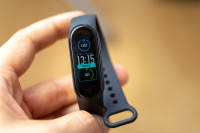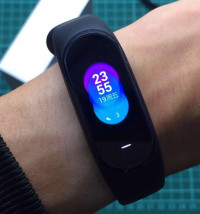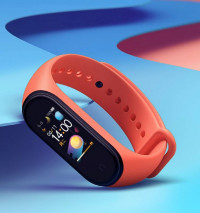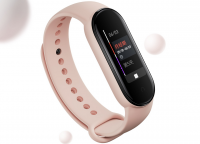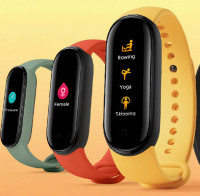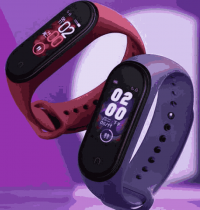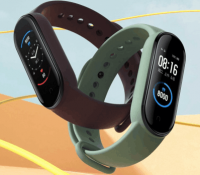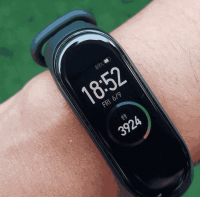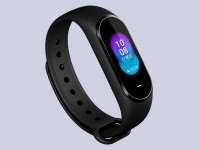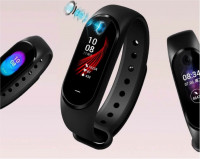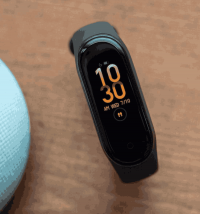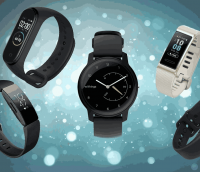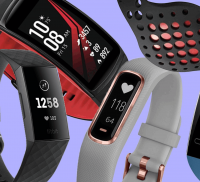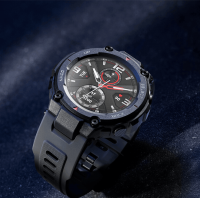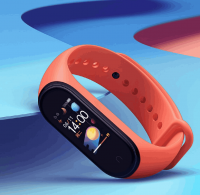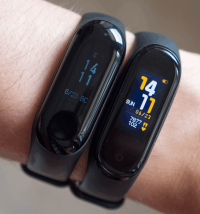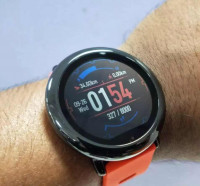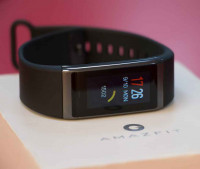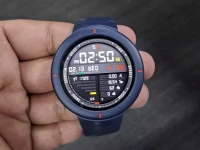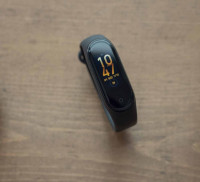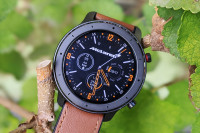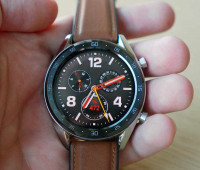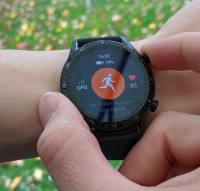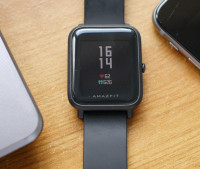Honor Band 5 Sport review
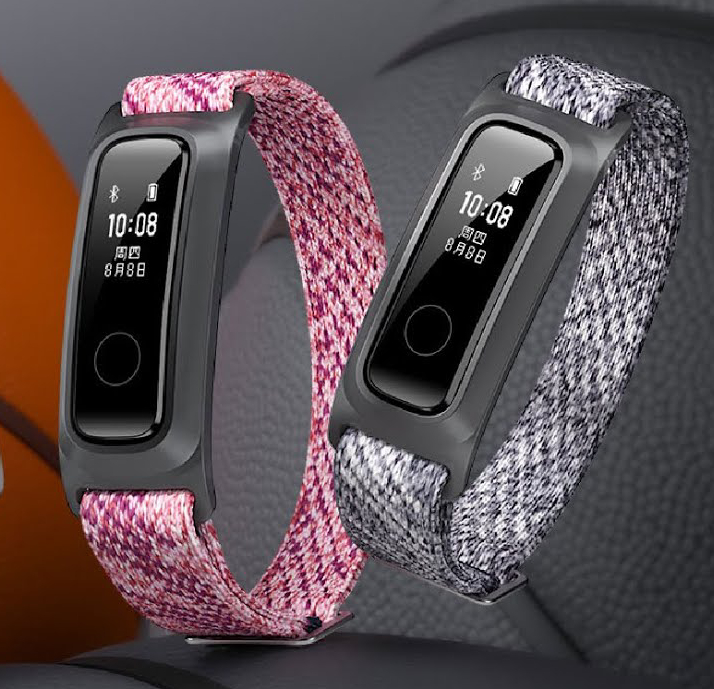
OUR VERDICT
The Honor Band 5 Sport gives runners and basketball players plenty of data to play with - even if not all of it is accurate. For the money, it goes impressively in depth, but outside these two activities it's severely lacking.
+FOR
Granular running data
Long battery life
Eco-friendly credentials
-AGAINST
Basic screen
No heart rate or GPS
Some of its tracking is wayward
The Honor Band 5 Sport is a stripped-down version of an already basic fitness tracker, the Honor Band 5. It has no heart rate monitor, no GPS, no touchscreen - it doesn’t even have a color display. What it does have, however, is a shoe clip.
Don’t worry, it’s more exciting than it sounds. The clip lets you strap the tracker snugly to your shoe laces and, thanks to new tech, access detailed running metrics such as your stride length, the swing angle of your leg, and your contact time with the ground.
It can also measure stats specifically for basketball, such as your average vertical jump height and average hang time, some of which is useful even if you’re not into the sport.
Essentially, it’s a tracker for runners and basketball players: you’re getting lots of detail for those two activities, but you’re sacrificing the Honor Band 5’s touchscreen, its heart rate monitor, and other activity options (the base band tracks swimming, for example, which the Sport doesn’t, despite having the same water resistance rating).
That’s all on top of the nuts and bolts you’d expect from any fitness tracker: you can wear the Honor Band 5 Sport on your wrist and it will count your steps accurately, as well as your sleep patterns and phone notifications.
And like the Honor Band 5, it’s gloriously cheap at just around £25 (roughly $30 / AU$45). While we found some glaring errors in its tracking - failing to register jumps entirely, for example - it’s hard to complain when you’re getting data this granular for such a low price.
Design
Slots into a wrist or shoe strap
Secure, light and comfortable
Wrist strap is made from recycled plastic bottles
The body of the Honor Band 5 Sport includes a small screen at the top (which we’ll talk about below), and a button underneath. That’s it. Don’t expect to be able to do much with it - you can’t respond to notifications, for example - but the button worked without fail, which is a good sign, and the tracker is water resistant to 50 meters.
The body slots into either the wrist strap or the shoe strap. It feels securely in place, and we never had to worry about it popping out when exercising. When you want to swap between the two straps, it’s easy: a firm press on the screen will bring the Honor Band 5 Sport free, and then you just pop it into the other strap.
It automatically detects when you’ve put it in the shoe strap, and switches to footwear mode, allowing you to track either running or basketball sessions. It did this reliably, and a buzz confirms it’s in place.
Unfortunately, because the body of the Honor Band 5 Sport is symmetrical, it’s easy to slot it in the wrong way up, but that’s easy to correct by taking the body out, rotating it and putting it back in: the vibration tells you when it’s in place properly.
Once you’ve slotted the screen in to the shoe strap, you feed one end of the clip under your laces and secure it via two clasps. Again, it feels sturdy, and never looked like it might come undone. It’s also surprisingly comfortable to wear while running: we never really felt it against our foot, and it was easy to forget it was there at all.
The 15g weight no doubt helps - it’s one of the lightest fitness trackers on the market. It’s not exactly slimline, and is thick enough to protrude a fair distance from your wrist, but not to the point that it looks silly.
The shoe strap looks purely functional, which is all you want from something attached to your foot. The wrist strap, however, is more stylish, and comes in six possible colors. The patterns look chaotic in an organic, natural sort of way, and that reflects the material it’s made from: recycled plastic bottles.
Honor calls the device its first “entirely eco-friendly product”, and hopefully that points to a future direction of travel. Call it a marketing gimmick if you want, but it’s certainly good for the environment. It dealt surprisingly well with sweat, too, and never chafed during exercise.
Screen
Tiny black and white display
Not a touchscreen
Responds well to gestures
The Honor Band 5 Sport’s display is as basic as it gets: a 48 x 88 LED black and white screen. It’s just about big enough to tell you what you need to know.
As you tap the touch button to cycle through various stats such as steps, calories burnt and time slept, each has a distinct icon that’s easy to recognize at a glance.
You can set the screen to wake up when you lift your wrist, which tells you the time, date and battery remaining, and you can also tell it to cycle through stats by rotating your wrist. Both worked consistently: even raising our wrist very slowly and titling it ever-so-slightly yielded the desired response.
Notifications, step tracking, sleep tracking and software
Accurate step tracking
Basic notifications
Sleep tracking is solid but has its quirks
As a notification tracker, the Honor Band 5 Sport is bare-bones. Most notifications simply get a generic icon, but calls are treated differently, and get a longer, more persistent vibration, as do alarms.
If you need help waking up in the morning, you can set a 'smart alarm' for a five-minute window, and the band will wake you up if it detects you’re in a light sleep, which is a nice touch, and one we wouldn’t expect from a device this cheap. Notifications were, at the very least, reliable, and it didn’t miss any, as far as we can tell.
On the sleep tracking itself, as we’ve said in the past: movement alone is not a good measure of whether you’re in deep or light sleep, so we took anything the Sport told us in that regard with a pinch of salt.
However, it roughly mirrored the tracking of the Amazfit GTR smartwatch, which has a heart rate monitor, and it was actually more accurate than the GTR when it came to distinguishing between being sleep and lying awake.
For example it knew, one morning, that we’d woken up, laid still for 10 minutes, and then went back to sleep, although bizarrely it didn’t mark that time as 'awake' on its app, despite that being an option.
Step tracking was accurate, whether we wore the band on our wrist or our foot. When we tested by walking 100 paces multiple times, the band was always correct to within five steps, and sometimes it was exactly right.
As for navigating the device’s menus, it’s easy enough, despite there only being one button. A press takes you between screens, and if you need to interact with anything further - to start a run while in footwear mode, for example - you give it a long press. It never failed to recognize these long presses.
Exercise tracking and app
Run tracking is mostly accurate
Basketball mode failed to register most of our jumps
Lack of GPS and heart rate monitoring hold it back
The base Honor Band 5 tracks outdoor runs, indoor runs, outdoor walks, indoor walks, indoor cycling, cross trainer, rowing, indoor swimming, and free training. The Sport tracks just running and basketball, the latter feeling like an oddly specific choice, but it’s basically a way of showing off the new six-axis motion tracking sensor.
Unless you’re a basketball player, that sensor comes in most useful when you're running, and the band gives you more running data than you’d get in fitness trackers four times the price.
Placing it on your foot gives you measurement for stride length, steps per minute, your average contact time with the ground, your average landing impact, the inward rotation of your foot while running, the swing angle of your leg, and your foot strike pattern, which tells you if you’re running more on your heels, midfoot or forefoot.
The two important things here are, one, accuracy, and two, how easy it is to translate that data into changes in your running style, particularly to avoid injury. On the first, the Sport seems, all-in-all, pretty accurate.
We tested it by adopting various running styles, lengthening our stride, keeping our feet on the ground longer between strides, changing the angle of our foot, and swinging our legs more, across multiple days and multiple runs. Every time, the results that popped up on our app mirrored our actions. It was by no means perfect, and occasionally gave us a wonky result that made little sense, but as an indicator of patterns and of changes over time, it seems reliable.
Where it failed miserably was on foot strike pattern. Initially, it told us that we were landing on our heel 100% of the time. That seemed odd to us, as it had never been pointed out before.
Sure enough, when we ran almost exclusively on our toes for five minutes - a hell of a calf exercise, by the way - the device still told us that we were landing on our heel most of the time. We can only guess that’s because the angle of our shoe, and therefore the angle the device was resting at, affected its calculations. But if this was the case for us, it will be the case for lots of other people too.
On translating that data into something useful, Huawei's (which own's Honor) health app fares admirably. It tells you whether your data is in the normal range for each parameter, and gives you some advice for correcting anomalies.
Telling us that our 'eversion excursion' is high would be totally useless on its own, but by giving concrete advice - ankle circles and heel raises - it allows you to act on it.
We’d question how useful the information is in the long run, though. Tracking your stride length over time could turn addictive, but once you know your leg angle during running, there’s not much you’re going to do to adjust it.
Once you’ve corrected mistakes, most of the data is only mildly interesting, and should remain consistent over time.
The lack of GPS means you can’t actually track where you’ve run without another device, too, and a lack of heart rate monitoring - plus an inability to import heart rate data from other devices - means that the Honor Band 5 Sport can only really be in the supporting cast when it comes to your fitness tracking, rather than the star of the show.
In basketball mode - which gives you a score for things like sprinting, movement, and acceleration, as well as jump height and hang time - the band failed to register most of our jumps, which was a pain.
As a test, we stood on a spot and performed ten high-effort jumps in a row, all of roughly the same height. The device, on ending the exercise, thought we’d only jumped three times. It got the height right for those three jumps, as measured against plyo boxes in the gym, but it’s hard to rely on.
Still, we like the fact that the band assigns you a basketball score based on the factors listed above and displays it all in a pretty graph in the app. If you play basketball regularly, turning the band on during sessions will, if nothing else, give you something fun to look at later, and let you see how your vertical jump is progressing.
That’s the theme with the app: its charts and graphs are easy on the eye. It’s far too hard to boot it up the first time - you have to download a second Huawei app just to get it working - but once you’re in, it displays all of your workout data in clear, colorful ways.
Each run has a main page that lists all your stats in rows, plus a separate tab for charts, where you can see how your cadence changed over the course of the exercise, for example.
Battery life
Honor promises two weeks of life between charges
The claims hold up even with regular use
Battery life is a big plus: Honor says the Band 5 Sport will run for two weeks on a single charge, and in the week we used it, it drained to 50% exactly.
You wouldn’t expect a device with a screen this small to burn through battery, but still, two weeks between charges for any smart device is something to be applauded. We used it almost daily for runs, and kept it on to track our sleep most nights.
Verdict
Compared to most fitness trackers, the Honor Band 5 Sport feels basic, and lacks key features of the Honor Band 5, such as heart rate tracking. Its lack of GPS means it’s never going to satisfy running enthusiasts on its own, and its tiny screen means it can’t replicate a smartwatch.
However, the level of detail it gives you in footwear mode, right down to measuring the angle of your foot strikes, is impressive. It doesn’t always get the tracking right, but we’re pleased to see Honor go all-out in one direction.
Budget fitness trackers - the good ones, at least - are almost all much the same: they do everything reasonably well. The Honor Band 5 Sport, then, is at least different.
Who's this for?
Running or basketball enthusiasts. Just bear in mind that if you’re a runner, you’ll probably need to use it alongside another device that measures heart rate, and preferably one that has GPS too (unless you run with your phone, of course).
Should you buy it?
If you're an avid runner or basketball player then for what little this costs it's well worth considering. Even if you have another fitness tracker as well, the Honor Band 5 Sport could make for a strong secondary/specialist one. If you're not much into running or basketball though then there's really nothing here to recommend.
